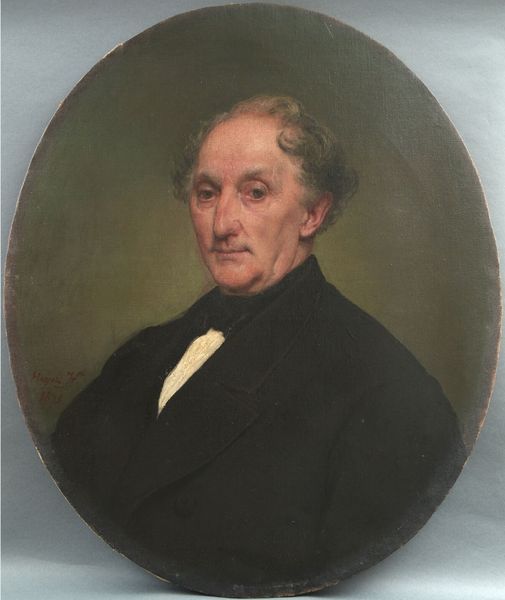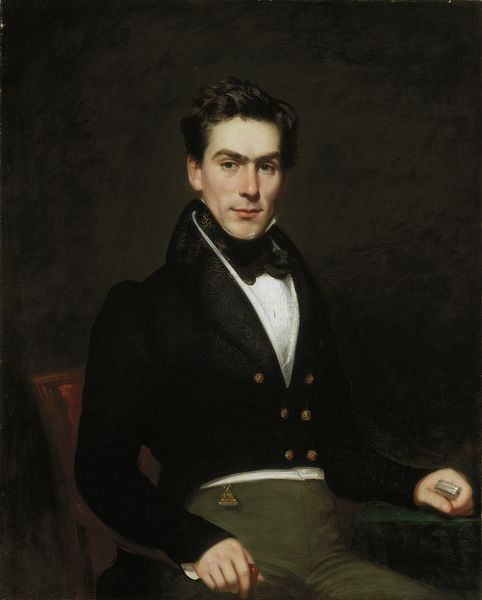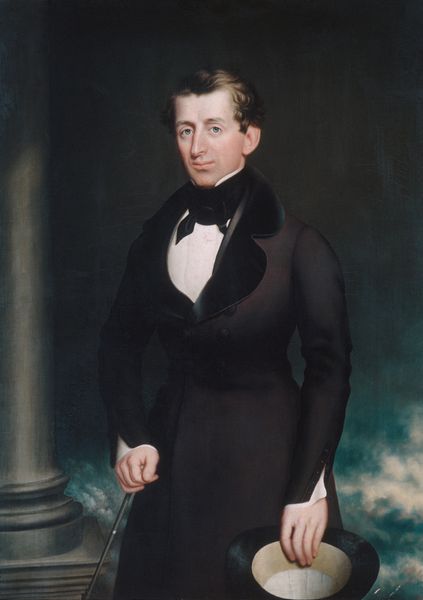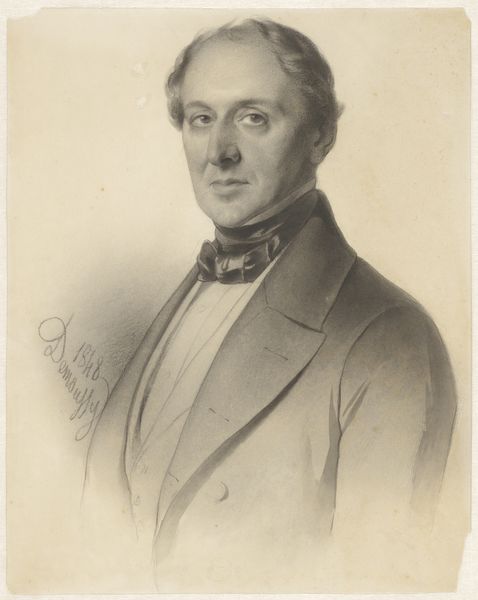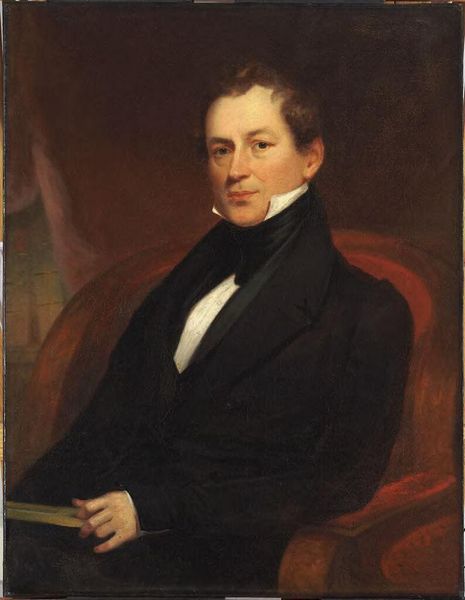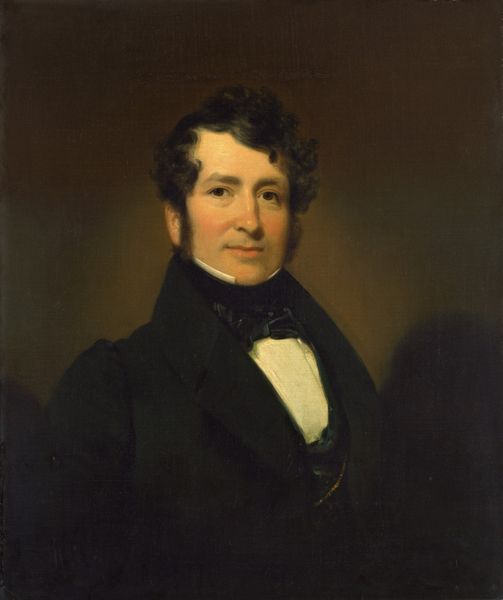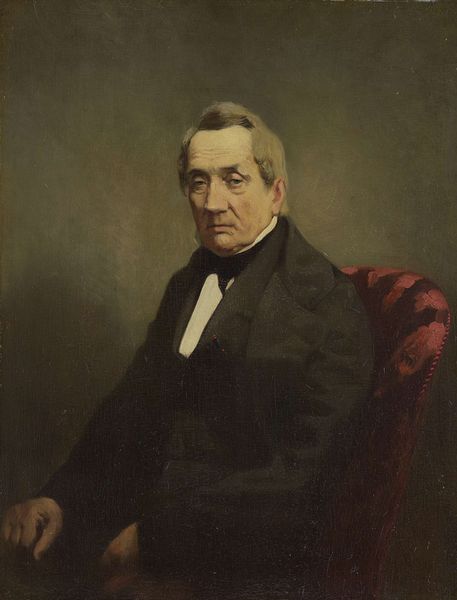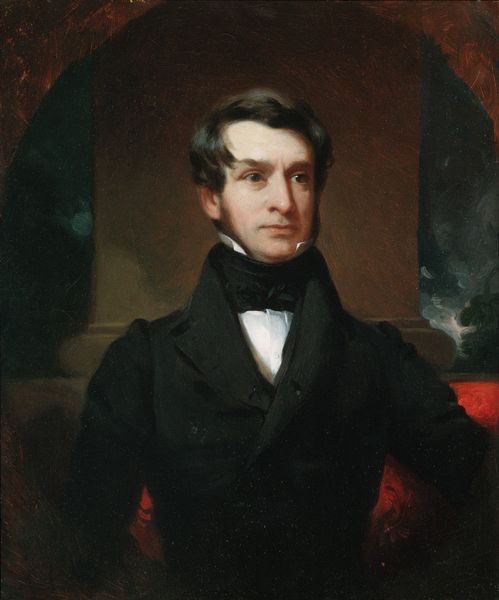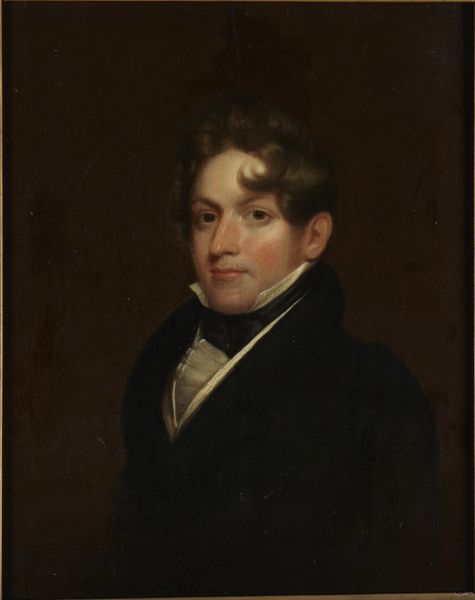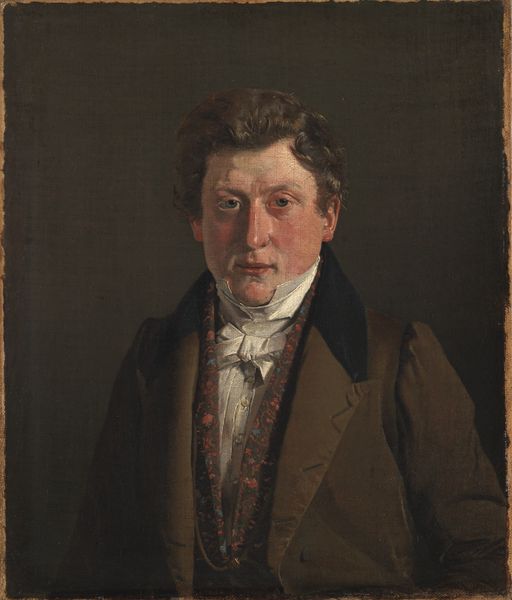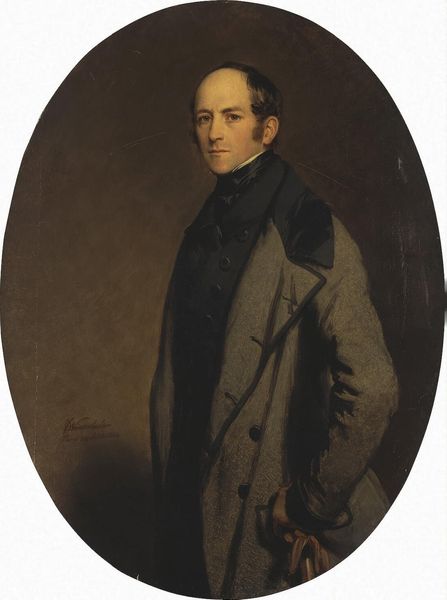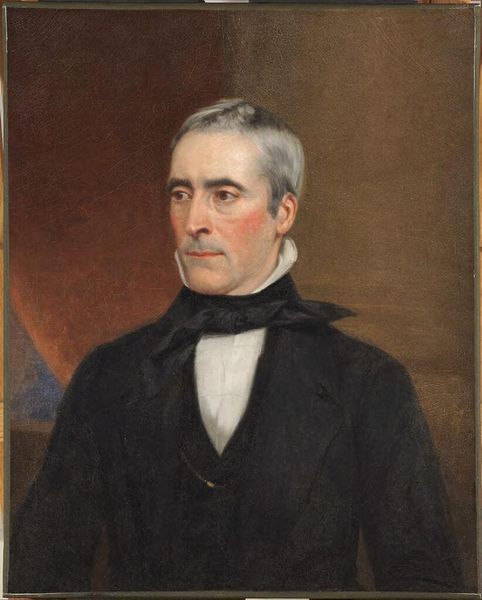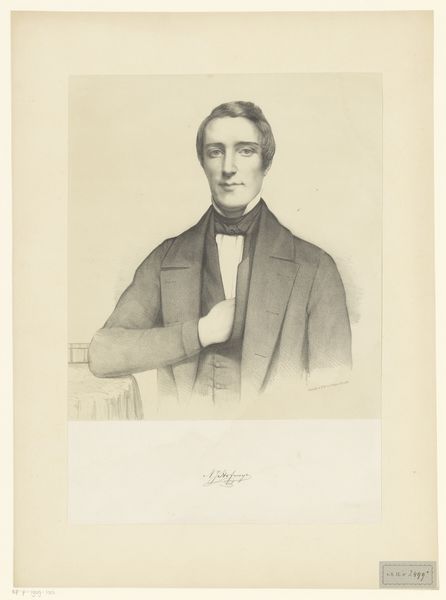
painting, oil-paint, canvas
#
portrait
#
painting
#
oil-paint
#
canvas
#
romanticism
#
history-painting
#
academic-art
Dimensions: 40.5 cm (height) x 29 cm (width) (Netto)
Editor: Here we have C.A. Jensen’s “Ole Jørgen Rawert, Director of Industrial Affairs,” created in 1839. It's oil on canvas and I'm struck by how formal the composition is, and how it seems to emphasize Rawert's status. What's your take on it? Curator: Well, focusing on the material conditions, consider the cost and labor involved in producing a portrait like this in 1839. Oil paints weren't mass-produced; pigments had to be ground, and the canvas itself represents a significant investment. This immediately positions the subject, Rawert, as someone of means and importance. Doesn’t it make you consider what message the production itself is sending? Editor: Absolutely. And the fact that it’s oil paint – which allows for such detailed rendering of fabrics – must play a role in highlighting his status? Curator: Exactly. Look closely at the fabrics; the texture of his coat, the crispness of his collar. These aren’t just aesthetic details. They speak to the industrial production of textiles, Rawert’s presumed involvement in it as Director of Industrial Affairs, and his consumption of luxury goods. Consider how the materiality almost *performs* his role in the societal hierarchy. Editor: That's a great point. It's like the portrait is a material testament to industrial capitalism itself. Do you think that understanding changes our appreciation? Curator: I think it moves us beyond simply admiring the likeness or the aesthetic qualities of the painting. We begin to see it as a product of its time, reflecting the social and economic forces at play in 19th-century Denmark. It encourages us to investigate the unseen labor and resources that contributed to its existence, not just as art, but as an object of power and consumption. Editor: So, looking at art through a materialist lens really helps to understand the broader social context of production and consumption, which in turn influences our interpretation. Curator: Precisely. It pushes us to consider the artwork as an artifact deeply embedded in its material and historical moment.
Comments
No comments
Be the first to comment and join the conversation on the ultimate creative platform.
